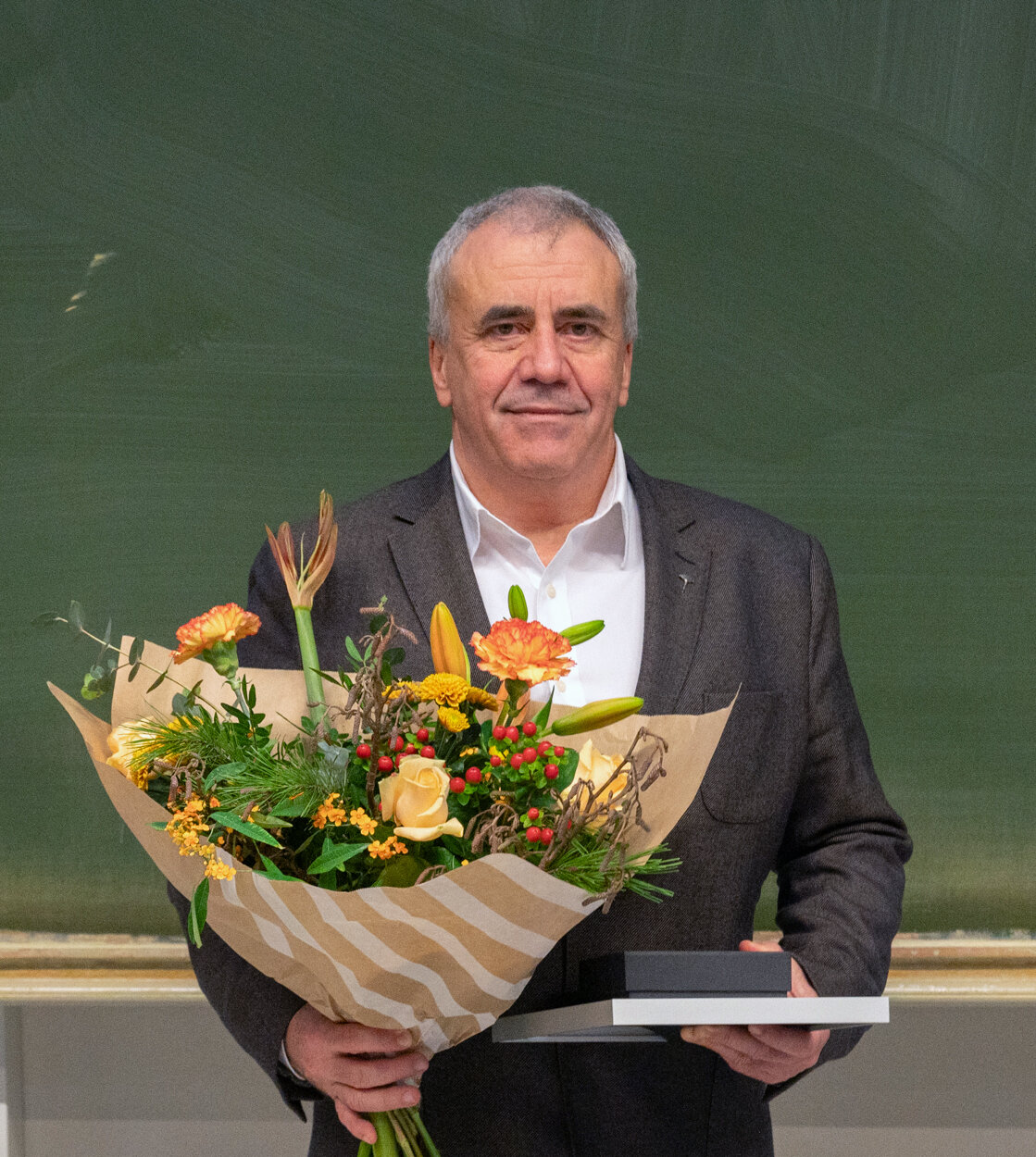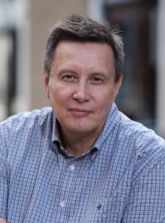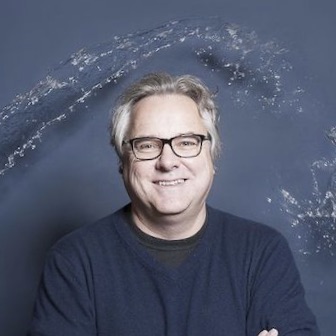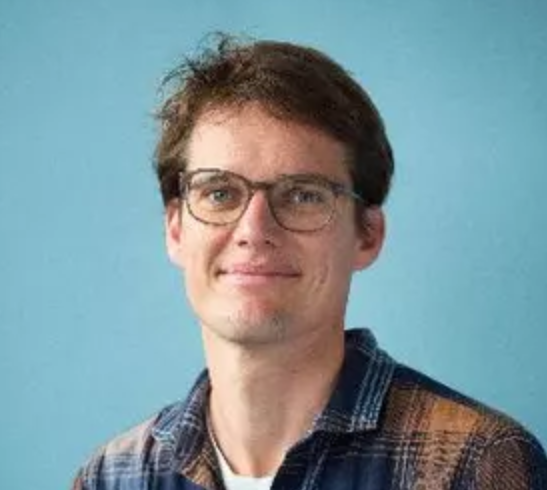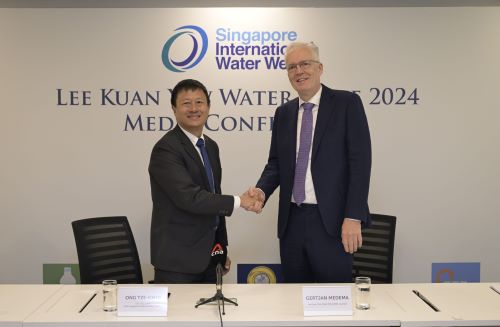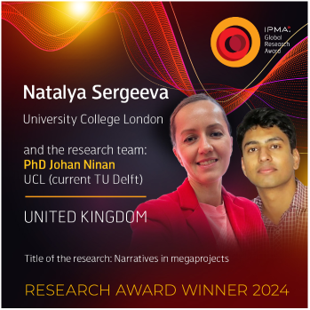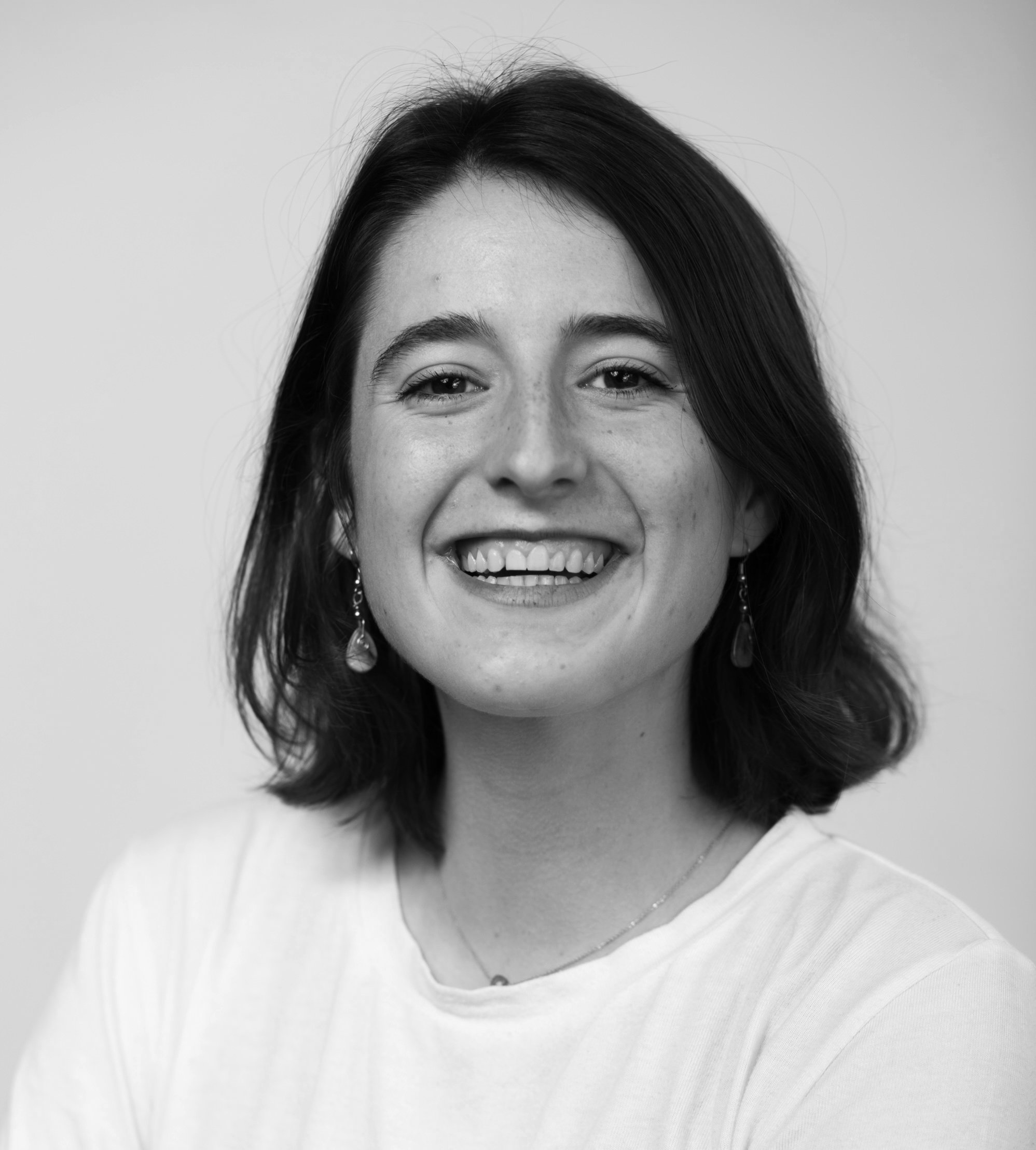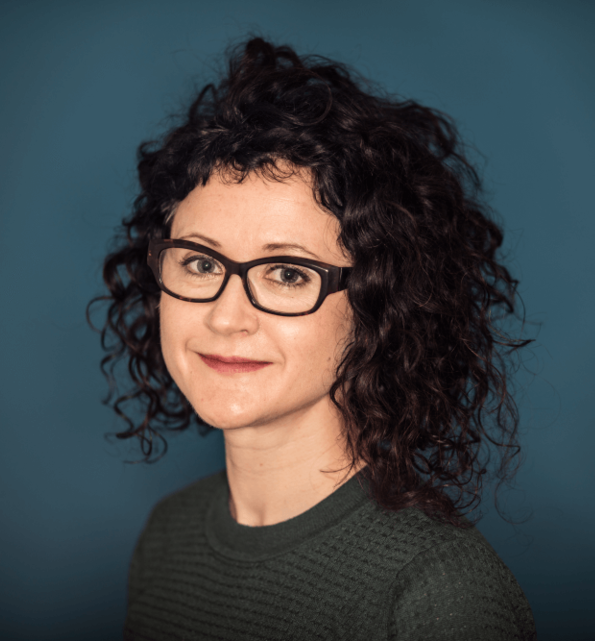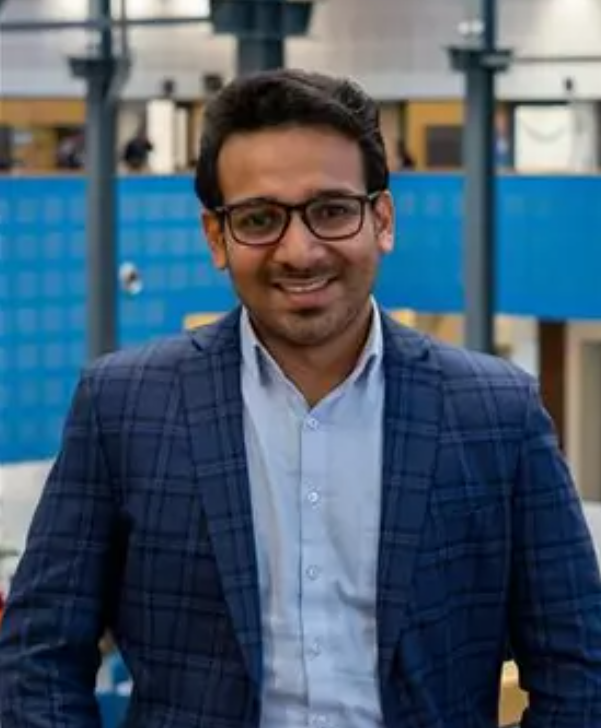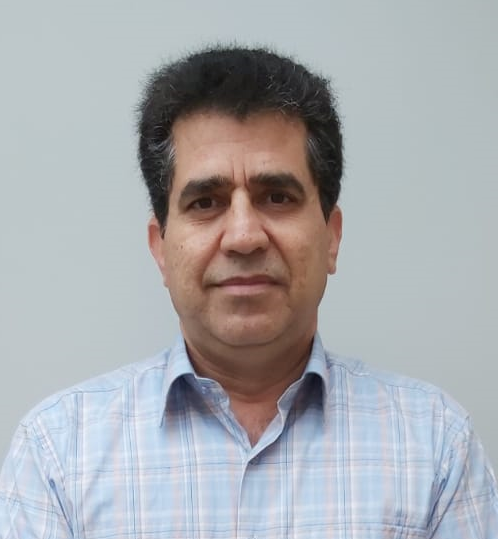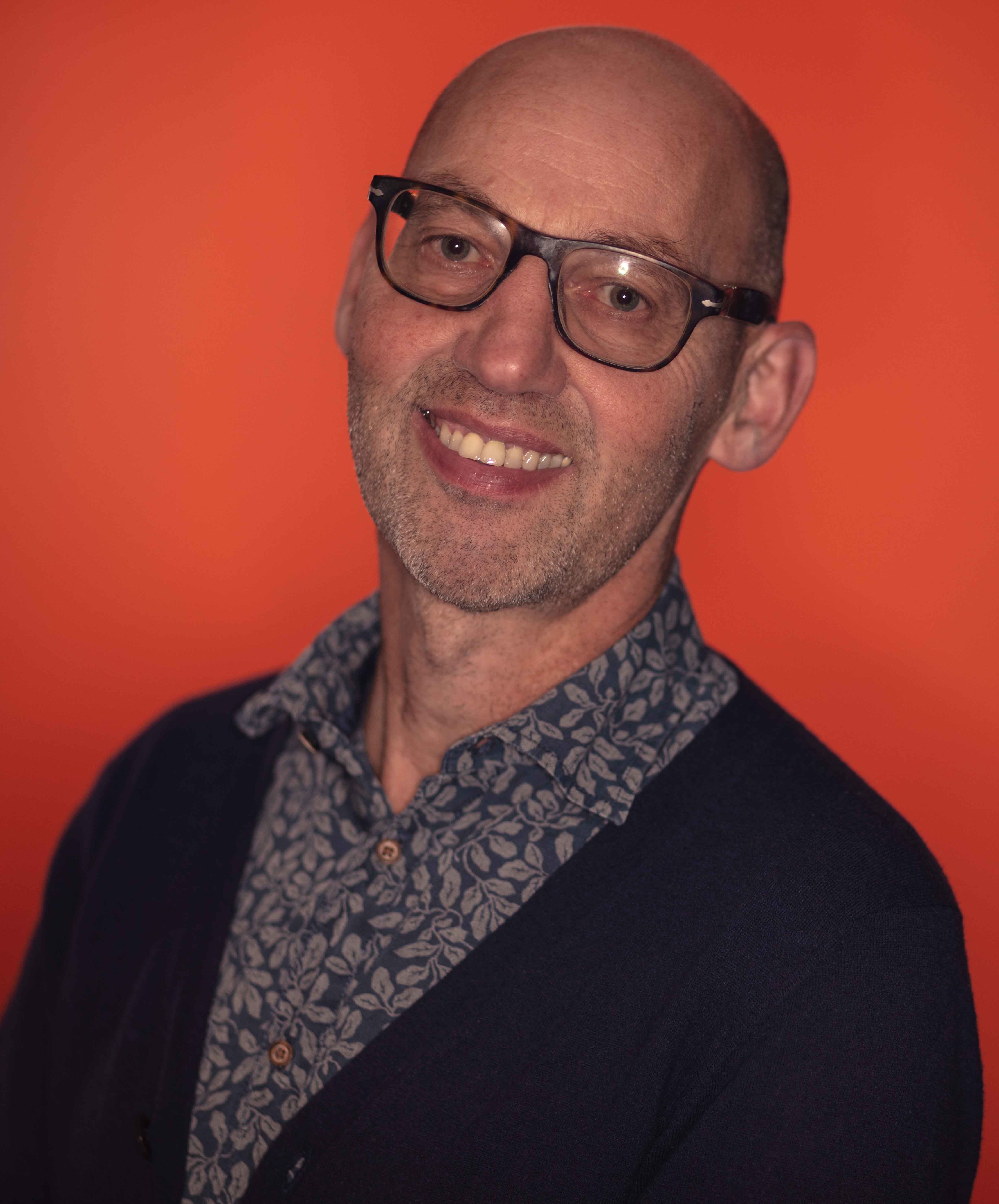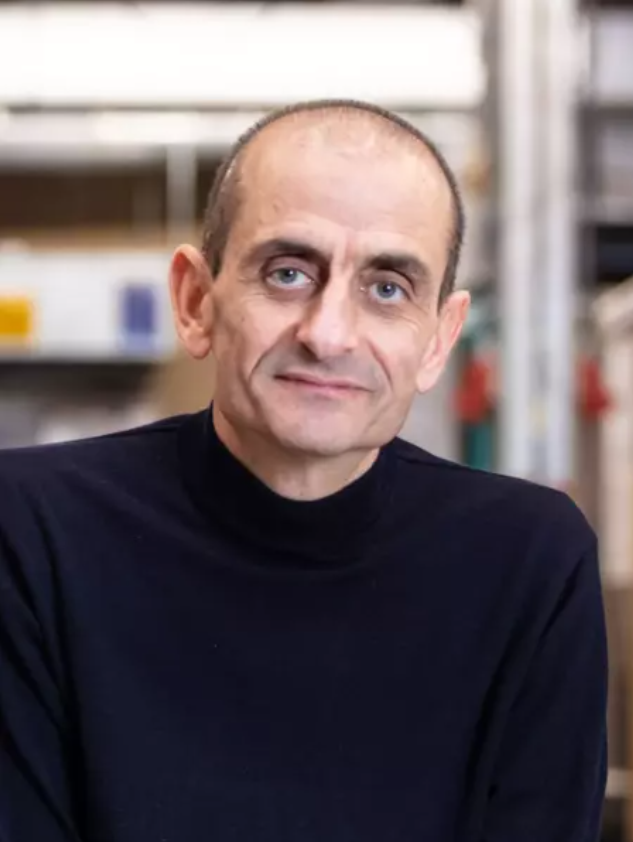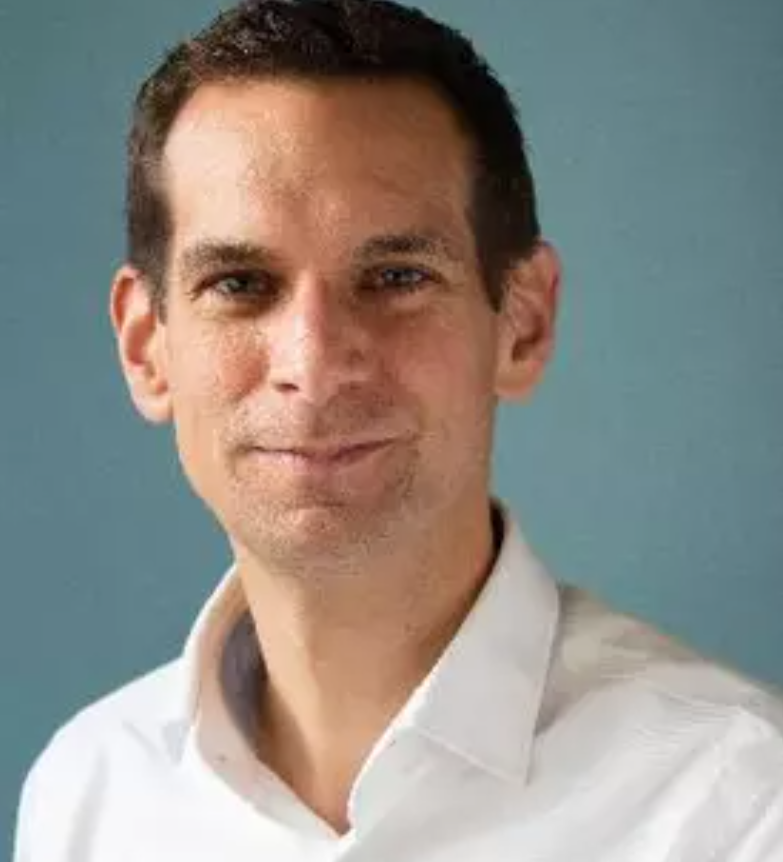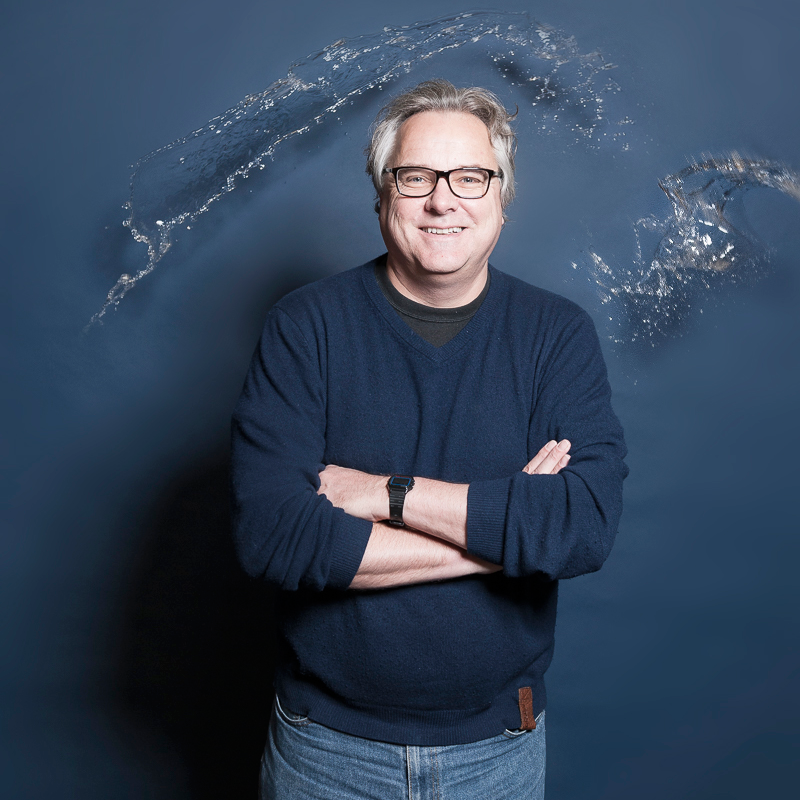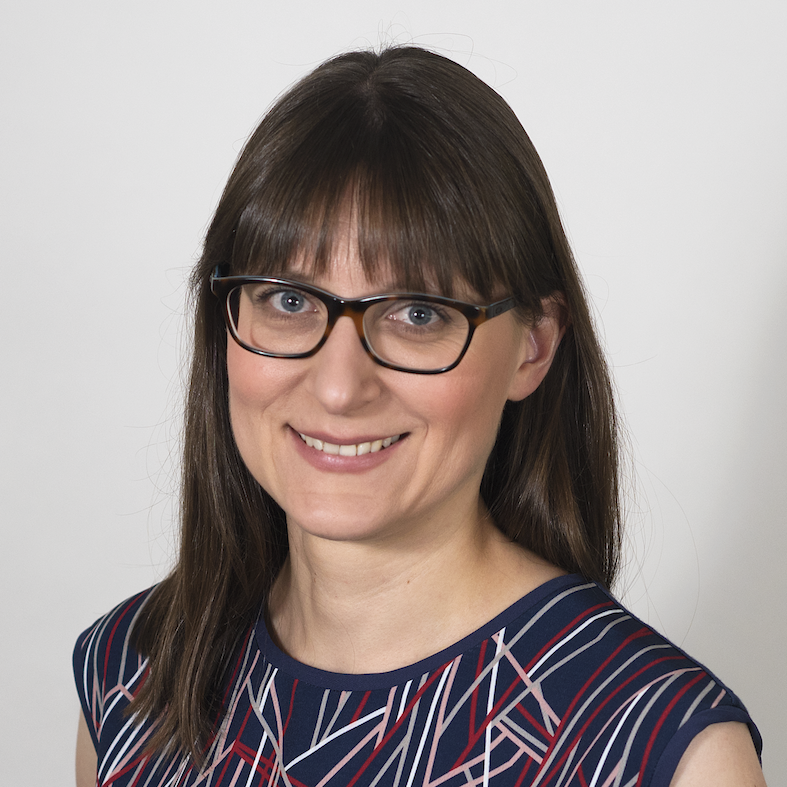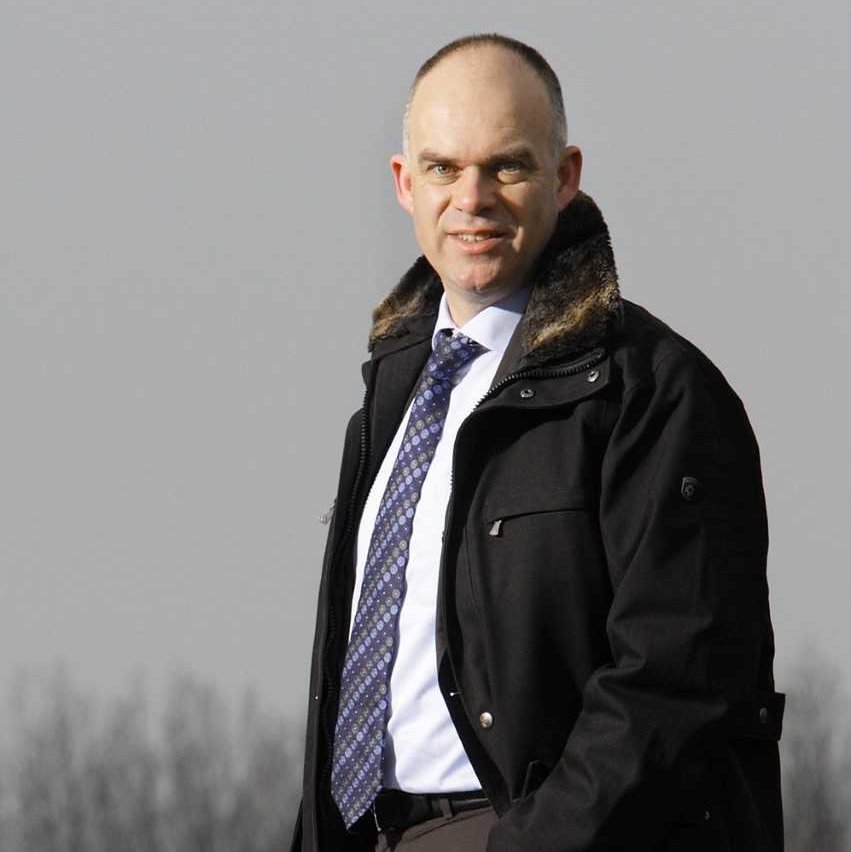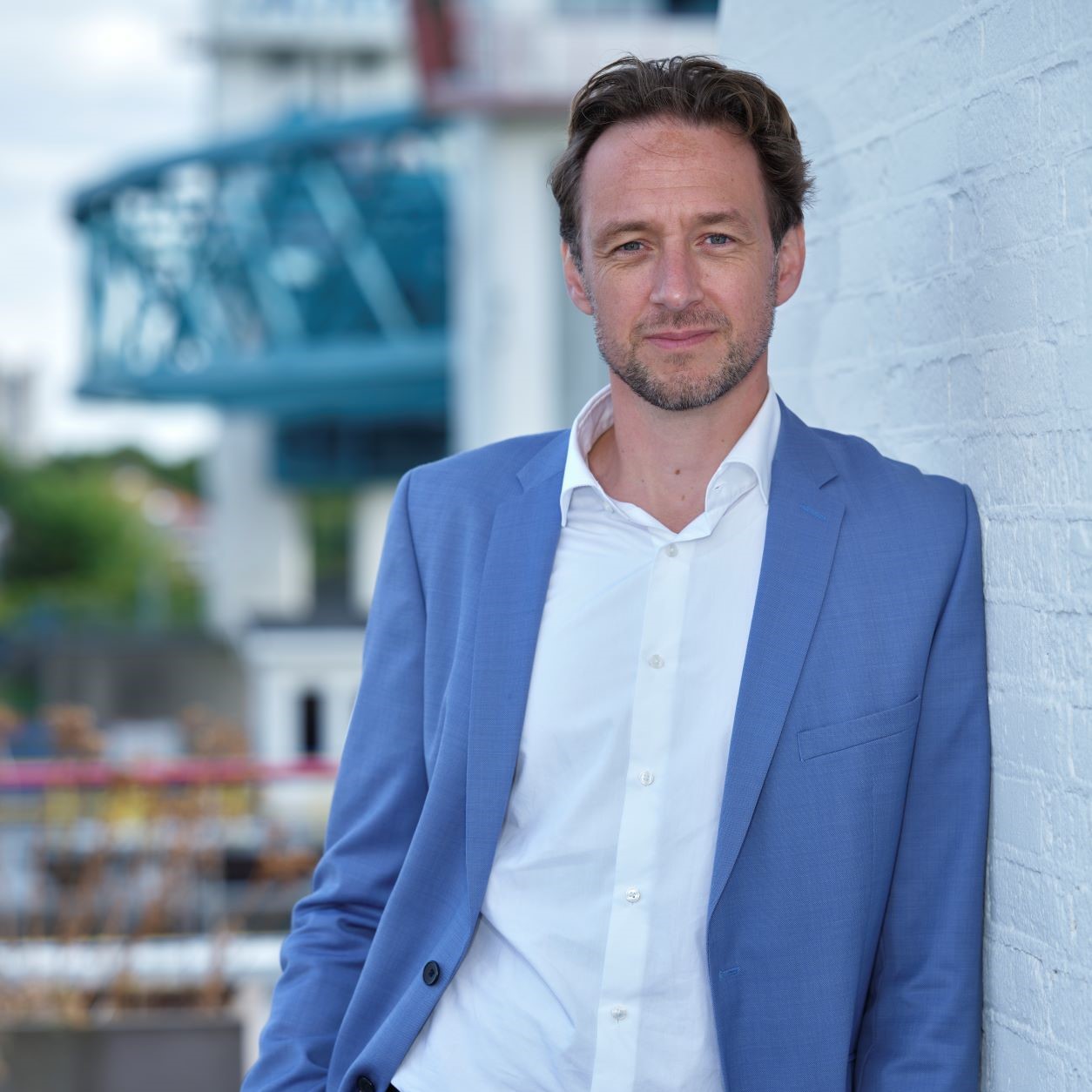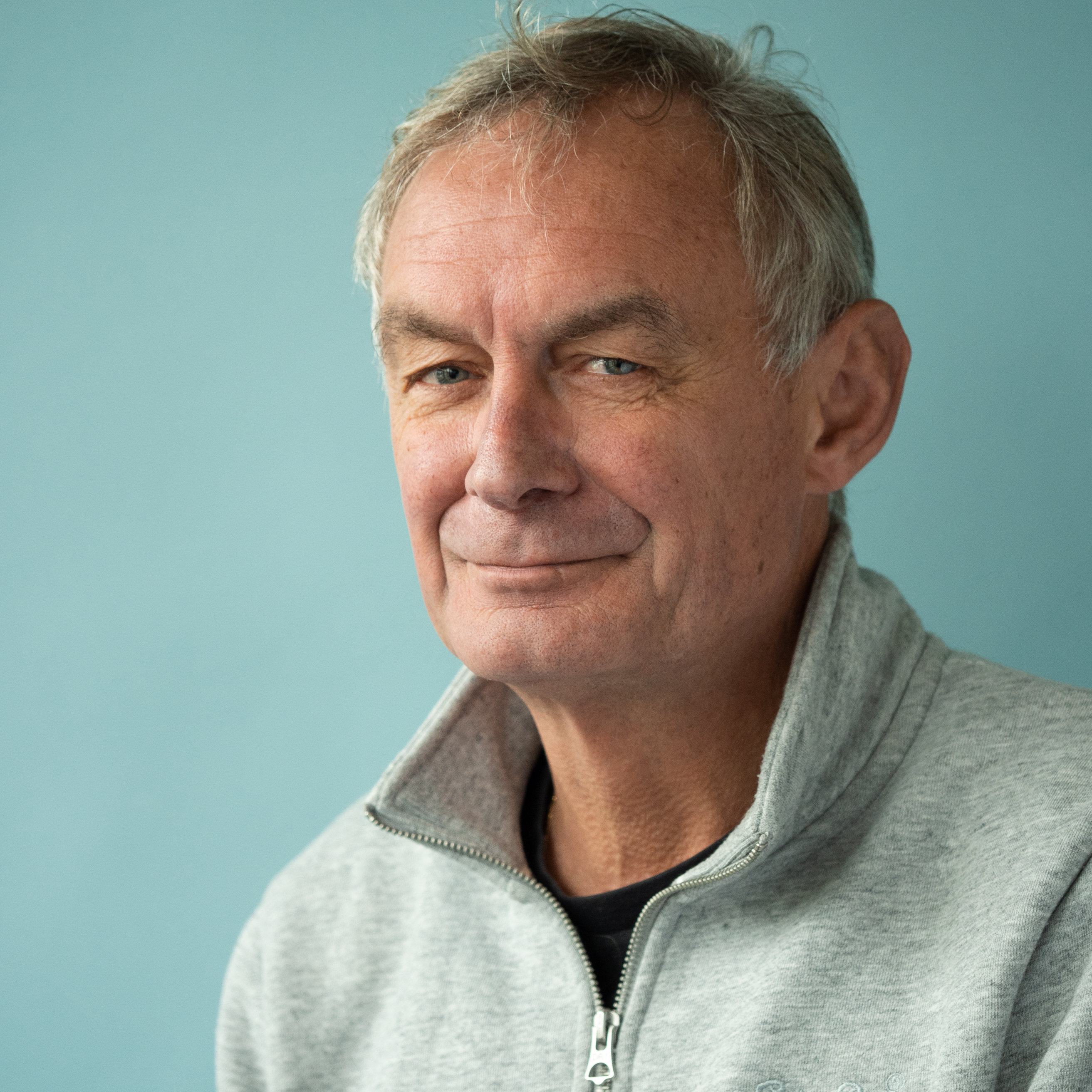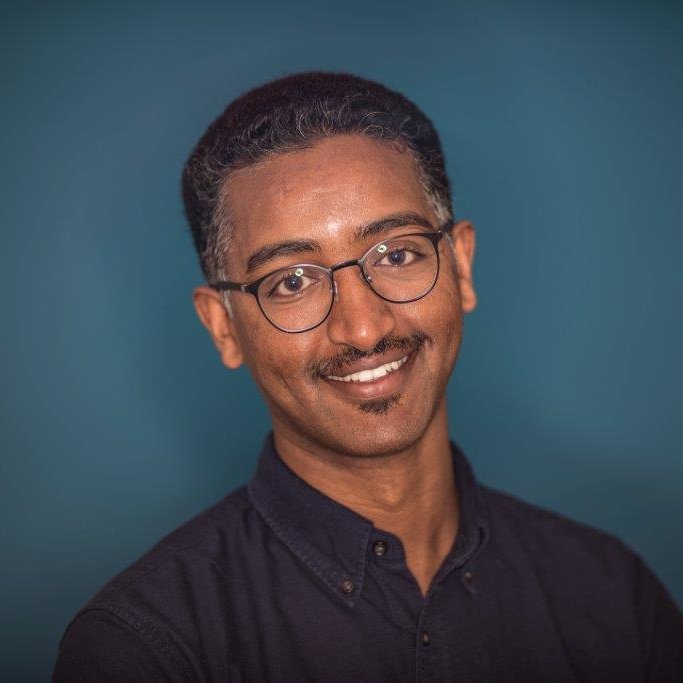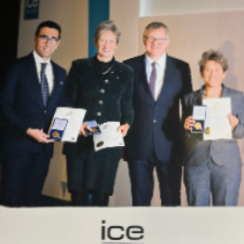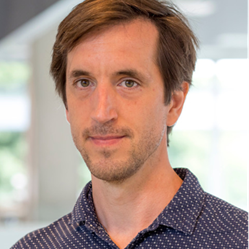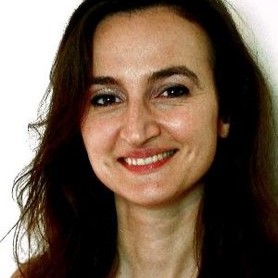Awards and publications
2024
-
Andrei Metrikine is awarded the Medal of Honour of the Netherlands Royal Society of Engineers (KIVI - Koninklijk Instituut van Ingenieurs) for outstanding achievements in the field of Offshore Technology.
Read more
-
28/11 | Zoran Kapelan | Fellow of the European Academy of Sciences
Prof. Kapelan is an International Water Association (IWA) Fellow with over 30 years of experience in water engineering. His research interests and expertise are centred on the development of novel engineering and informatics / artificial intelligence-based methodologies addressing a wide range of issues in urban water management (both water and wastewater systems).
-
The offshore environment is a high-density source of clean energy, but also a threat to infrastructure and human safety. This duality calls for structures with novel functionalities: the ability to harvest energy and, simultaneously, protect adjacent structures. This project exploits this duality by introducing a groundbreaking concept: hydroelastic black holes at sea. The goal is to study the fundamental physics behind the coupled system between waves, flexible-floating structures and locally-resonant metamaterials.
-
09/07 | Nick van de Giesen | NWO SDG Scaling Grant | ZAMSECUR
Nick van de Giesen received the grant, meant to promote the scaling up of promising innovations to achieve the goals of the SDG agenda, to better monitor rivers, water bodies and flood plains in Africa, to secure water management. Africa is grossly underserved in terms of monitoring of water resources. In the ZAMSECUR project, very accurate and cost effective ways were designed and tested to measure water stocks and flows within the African context. This proposal seeks to scale these innovations to cover all of Africa, starting in Zambia.
-
22/04 | Emiel Kruisdijk | NWO Rubicon | Safe drinking water: Removing iron and arsenic using naturally coated sand grains
Thanks to the Rubicon grant, young researchers can gain international reserach experience. Emiel will travel to EAWAG Switzerland to research water quality in aquifers. Aquifers and drinking water filters contain sand grains with iron coatings, which are crucial for iron and arsenic removal from groundwater. In this research, iron coating formation is studied on grains using microfluidics, micro(spectro)scopy, and models. Obtained insights enable water quality forecasting, which is beneficial to provide safe drinking water.
-
Gertjan Medema was awarded the Lee Kuan Yew Water Prize 2024, for his significant contributions in the field of wastewater-based epidemiology. Professor Medema is a renowned microbiologist and an expert in water quality and health, particularly known for his extensive research on the detection and control of waterborne pathogens. At the onset of COVID19 in early 2020, Professor Medema and his team were the first to detect the presence of SARS-CoV-2 in wastewater in the Netherlands, even before cases were officially reported in certain cities. Recognising the importance of early detection and surveillance, he swiftly pivoted his team’s research to address the urgent need to monitor the spread of the virus. His timely research enabled the use of wastewater surveillance during the COVID-19 pandemic to fight the spread of the virus.
This breakthrough had global impact. By detecting the virus in wastewater, even before cases are reported through clinical testing, wastewater-based epidemiology provided valuable insights into the prevalence of the virus in a community. There are currently more than 4,000 sites in 72 countries, that have adopted wastewater surveillance of SARS-CoV-2. Professor Medema himself was connected to about 30% of these programmes directly.
Professor Medema will deliver the Lee Kuan Yew Water Prize 2024 Lecture on Wednesday, 19 June 2024, during the Singapore International Water Week 2024. He will receive a gold medallion and award certificate from Mr Tharman Shanmugaratnam, President of the Republic of Singapore. More info: www.siww.com
-
Johan Ninan received the 2024 IPMA Global Research Award for his research on “Narratives in Megaprojects” funded by the UK Economic and Social Research Council (ESRC). The research drawing on our longitudinal research into project narratives highlights how narratives can bring together disparate experiences, are performative as they shape and change the future, are strategic as they can create, maintain or disrupt institutions, and are promotional as they are consistently communicated to brand an image of the organisation.
-
Antarctica has long been considered the “sleeping giant” of sea level rise. But thanks to global warming, it is poised to overtake Greenland as the main contributor. Sophie de Roda Husman combined satellite data to create a detailed historical surface melting record that may help reduce the sizable uncertainty in sea level rise estimates of current climate scenarios. It won her the award for Best TU Delft Climate Action paper of 2023.
-
Susan Steele-Dunne has been awarded a NWO Vici grant. She will explore how to monitor the pulse of the Earth’s ecosystems using radar observations. Variations in radar observations from a forest during a day can reveal early warning signs of declining health conditions of the vegetation. An improved understanding of these processes will allow us to make better predictions of how ecosystems will respond to climate change. In the long term, it may even offer opportunities for early interventions.
-
The jury and the audience awarded Vibrotwist the Offshore Wind Innovators Awards 2023 . The award marks a significant milestone in the industry by celebrating groundbreaking advancements that promise to reshape the offshore wind sector. Its solution aimed to reduce noise emissions during pile driving through axial and torsional vibrations. What set Vibrotwist apart was its potential to transform the offshore wind sector in both the short and long term. It could reduce ecological impacts and it showcased effectiveness across various soil types.
Read more
-
Participatory Integrated Digital Twin for Adaptive Urban Resilience to Water Extremities (ResilientHydroTwin) aims to create a city-level ‘digital twin’ – a virtual model of the city that integrates various system models like hydrological, hydraulic, water resource management, and transport systems. This model will help us understand and predict the city’s behaviour during extreme events, thus enhancing disaster response and resilience.
Read more
-
Climate change and sea-level rise have important implications on seaoor topography, impacting coastal areas of low-lying countries like the Netherlands. Accurate and up-to-date bathymetric information is crucial for navigation, dredging, and environmental management. This project aims to combine empirical and physics-based methods using physics-informed machine learning to overcome limitations of the traditional methods. The Dutch coastal zone presents a challenging environment, but we anticipate significant improvements using the proposed method.
Read more
-
Venus is in size and composition similar to Earth, but inhospitable for life because it is extremely hot and dry. The atmosphere consists of carbon dioxide with sulfuric-acid clouds. The European Space Agency will launch a new spacecraft, EnVision, to study our neighbouring planet in close-up and discover what drives the enormous differences. We will develop a computer-code to simulate observations by EnVision instruments. With this code, we can predict how observations should be taken to minimise the errors and to maximise the amount of atmospheric information that can be retrieved.
Read more
-
DISCOVER aims to develop an autonomous, synchronous, continuous and intelligent identification and data analysis system for materials and products in existing end-of-life built works. Together with key stakeholders, along with construction industry representatives, we will make deconstruction more efficient, optimise the use of resources, improve the environmental footprints and enhance the circularity of construction and demolition. The expected outcomes include an autonomous robotic platform coupled with continuous identification tools to scan built works.
2023
-
December | Hoessein Alkisaei | NWO Mozaïek 2.0 | Waste and manufactured building blocks for a circular structural design methodology
Ir. Hoessein Alkisaei has been awarded an NWO Mozaïek 2.0 grant. Mozaïek 2.0 is a doctoral fellowship program aimed at graduates with a migration background from Africa, Asia, the Caribbean, Central and South America, and Turkey who are underrepresented in the Netherlands.
Hoessein's research, titled "Waste and manufactured building blocks for a circular structural design methodology," aims to investigate waste objects as innovative building blocks for new structural elements. The goal is to improve circularity in construction and efficient resource utilisation. He will do so through a combination of modelling and experimental techniques. This involves using advanced software for finite element modelling and mechanical analysis to optimise the strength, shape, and structure of the building blocks. Additionally, he will create prototypes of the building blocks to be tested for load-bearing capacity, structural behaviour, and deformation characteristics.
With this research, Hoessein aims to contribute to the knowledge base on sustainable construction practices and circular economy principles, and to develop practical guidelines and recommendations for implementing waste reduction strategies, reuse of building elements, and circular materials and technologies.
More information about the topic can be found at Hoesseins website.
-
Moisture Tracking for Climate Models: a Community Effort
We further develop existing tools to make them track fictitious water particles through the atmosphere within climate models. And aim to gain more insight into the pros and cons of different tools in terms of accuracy, computational speeds, user-friendliness and data storage. By practising Open Science-principles it will be possible to learn from each other and carry out improvements. New users will also be able to make better-informed decisions on which tool will be most applicable for their specific research questions.
-
Improved open-source sustainability of Pastas software through documentation, visualization, and AI-generated tests
The open-source software Pastas is used to analyze time series of groundwater levels. It is proposed to improve the sustainability and application of Pastas by extending the documentation, developing show-cases of groundwater analyses around the world, implementing rigorous unit tests using AI, and developing a new open-source visualization tool. These developments are envisioned to enhance the open-science application of time series analysis of groundwater levels worldwide.
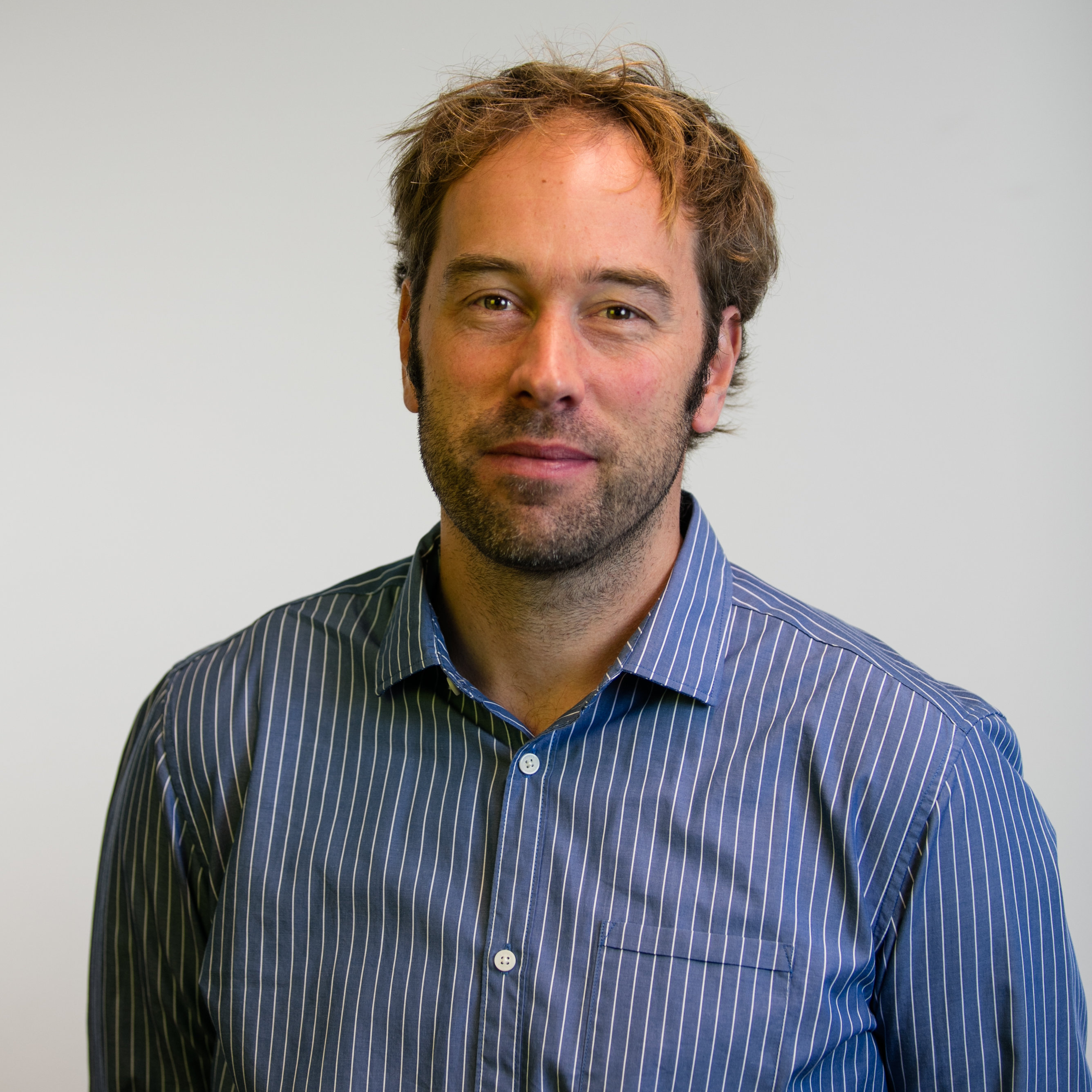
-
Aquifer Treatment as Green Purification Technology for Sustainable Drinking Water Supply
River bank filtration (RBF) is a widely used nature-based technique to produce drinking water from surface water. Energy intensive post-treatment is often required, because pollutants are not always reliably removed. AQUIPURA investigates pollutant removal in RBFs in its entirety ranging from organic micro-pollutants to viruses.
-
Nick van de Giesen received the award for empowering sub-saharan African communities in measuring and understanding their climate and improve local climate resilience. Nick is co-founder of the TAHMO project, which has developed and installed a vast network of 640 weather stations across Africa.
-
Clouds are responsible for a large part of the uncertainty in climate projections. With a Starting Grant from the European Research Council (ERC), Franziska Glassmeier aims to better understand the evolution of clouds and their influence on the future climate.
-
Rare Earth Elements (REEs) are crucial for our industry. In Europe we largely depend on the material being imported from China. In the project Supreemo new technologies will be develop to produce REEs from European mines, needed to manufacture high energy-efficient motors which are vital for electric mobility and renewable energy technologies. The focus is on new mining technologies that will be innovative, environmentally friendly, and socially and economically sustainable.
2022
-
A sustainable accessible city, without private cars? XCARCITY develops digital twins of low-car urban areas, based on measured and simulated mobility data of people and goods. The researchers apply these virtual models to test various scenarios and interventions for addressing specific problems in the cities of Almere, Amsterdam, and Rotterdam.
-
Future Flood Risk Management Technologies for rivers and coasts. The Future FRM Tech programme develops flood resilient landscapes for rivers and estuaries as well as technical solutions for water barriers – explicitly addressing any legal, economic and governance aspects that may impede their practical use. They use case studies for the Lek and Geul rivers in the Zeeland province.
-
Climate change and increased pollution present drinking water operators with an increasing challenge to monitor and ensure the quality of our drinking water. The international consortium ToDrinQ develops, among other things, new technologies for real-time detection of pollution.
-
The report authored by a team of 40 African researchers and co-authors from institutes including UCL, University of Oxford and TU Delft, highlights the different starting points, solutions and uncertainties faced by countries and their impact on meeting development goals. It calls for a shift in how politicians, funders and researchers think about the clean energy transition in the African continent. The paper reveals the differing technological, economic, financial, and social needs of countries to enable them to meet development goals.
-
Frequency effects in the dynamic lateral stiffness of monopiles in sand: insight from field tests and 3D FE modelling
The aim of this work is to shed new light on dynamic soil–monopile interaction, based on the results of unique full-scale experiments performed at the Westermeerwind wind park (Netherlands). The response of a 24 m long, 5 m diameter monopile to harmonic lateral loading of varying amplitude and frequency is inspected. The analysis of original field measurements (soil accelerations and pore pressures) enables the lateral stiffness observed at the monopile head to be linked to dynamic effects occurring in the surrounding soil. The interpretation of measured data is supported by three-dimensional finite-element studies, which also look at the influence of drainage conditions and monopile size. The set of results presented supports the need for dynamics-based monopile design, as higher frequencies gain relevance in the most recent offshore wind developments.
-
In the paper we interpret the hydromechanical behaviour of a steep, forested, instrumented slope during an artificial rainfall event, which triggered a shallow slope failure. The soil’s mechanical response has been simulated. Failure occurs within a colluvium shallow soil cover, characterised as a silty sand of low plasticity. The hydraulic and mechanical parameters are calibrated, based on an extended set of experimental results. The results are compared with field data of the mechanistic and the hydraulic responses up to failure and are found to provide a very satisfactory prediction. The study identifies water exfiltration from bedrock fissures as the main triggering agent.
-
Ice loss from the Greenland ice sheet is one of the largest sources of contemporary sea-level rise (SLR). While process-based models place timescales on Greenland’s deglaciation, their confidence is obscured by model shortcomings including imprecise atmospheric and oceanic couplings. Here, we present a complementary approach resolving ice sheet disequilibrium with climate constrained by satellite-derived bare-ice extent, tidewater sector ice flow discharge and surface mass balance data. We find that Greenland ice imbalance with the recent (2000–2019) climate commits at least 274 ± 68 mm SLR from 59 ± 15 × 103 km2 ice retreat, equivalent to 3.3 ± 0.9% volume loss, regardless of twenty-first-century climate pathways. This is a result of increasing mass turnover from precipitation, ice flow discharge and meltwater run-off.
-
Cultural heritage sites all over the world are increasingly threatened by urbanisation and climate change. Entire historic cities are progressively damaged by sinking coastal land and subsidence at regional scale. Current mitigation measures have limited effect as they are based on local data for single monuments, making it impossible to recognise general relationships between climate change effects and structural degradation mechanisms. This project aims to develop the first integration between satellite data and computational models of heritage degradation at regional scale. This integration will offer new fundamental insight into the resilience of cultural heritage sites and potentially transform heritage protection.
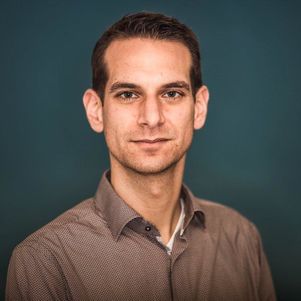
-
State-of-the-art Earth System Models’ predictions about how severe and how often droughts will occur in a future climate are unreliable. A key component that controls drought is the ability of vegetation to access and take up water stored in soils through its roots and release it as water vapour. In this project the researcher will develop a holistic and adaptive approach with the objective to improve predictions of droughts. This approach differs strongly from the mainstream effort by considering root systems of ecosystems to dynamically adapt in response to changes in rainfall.
